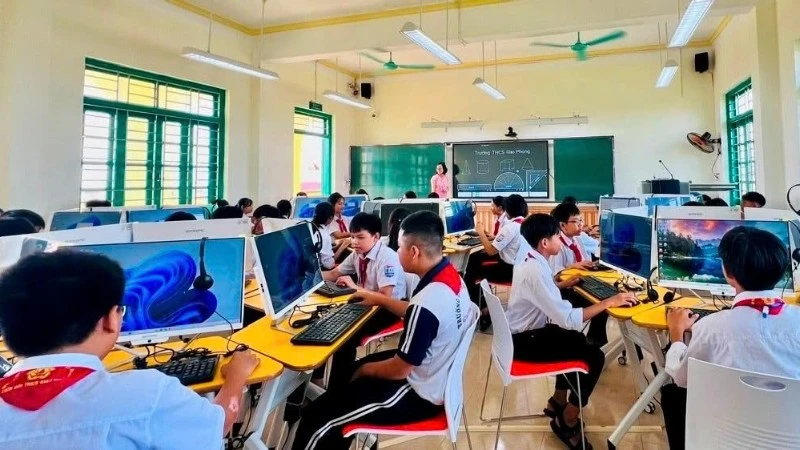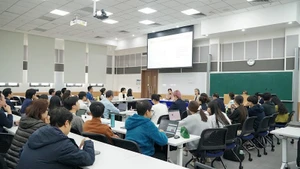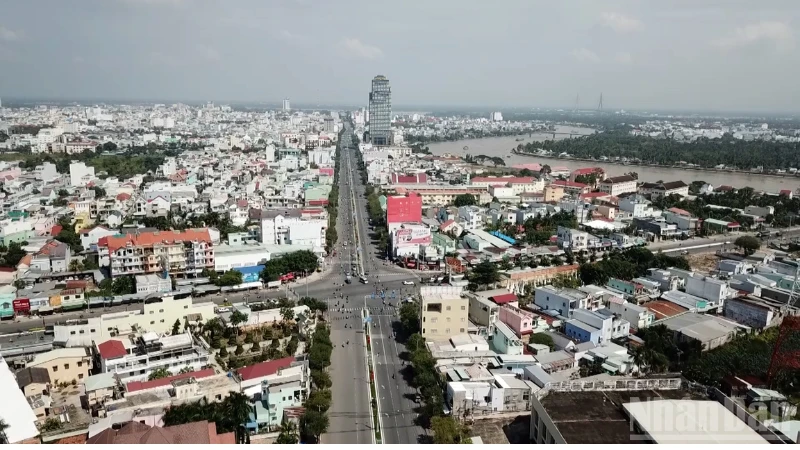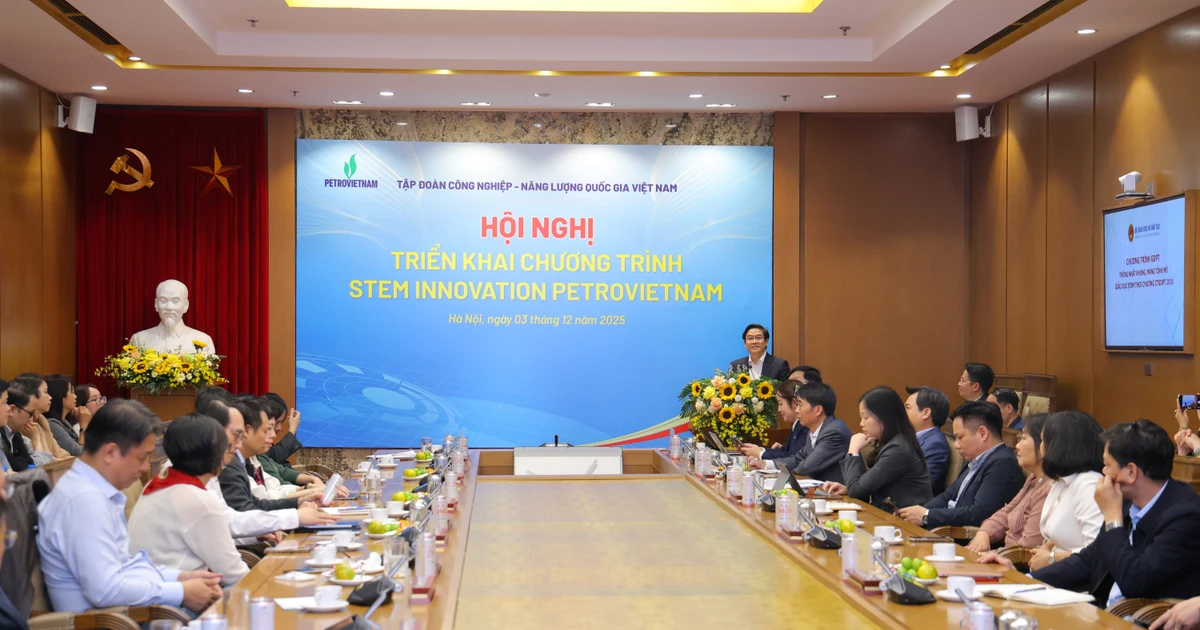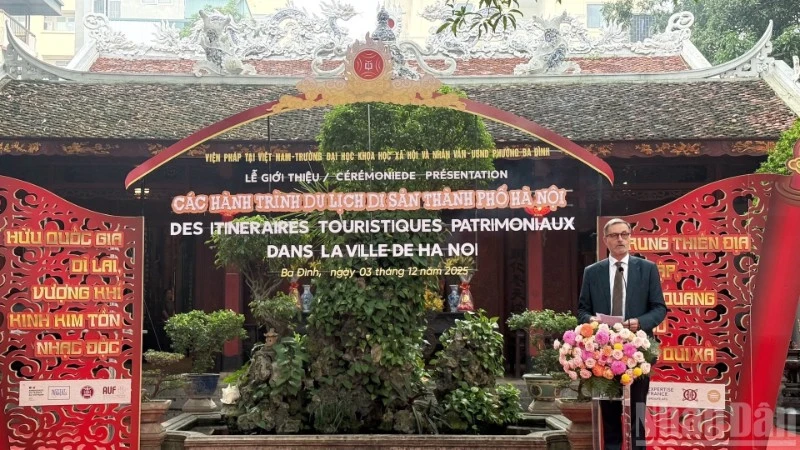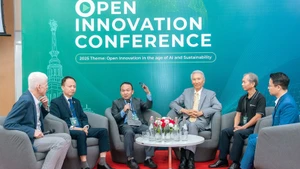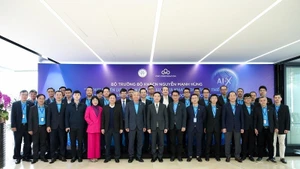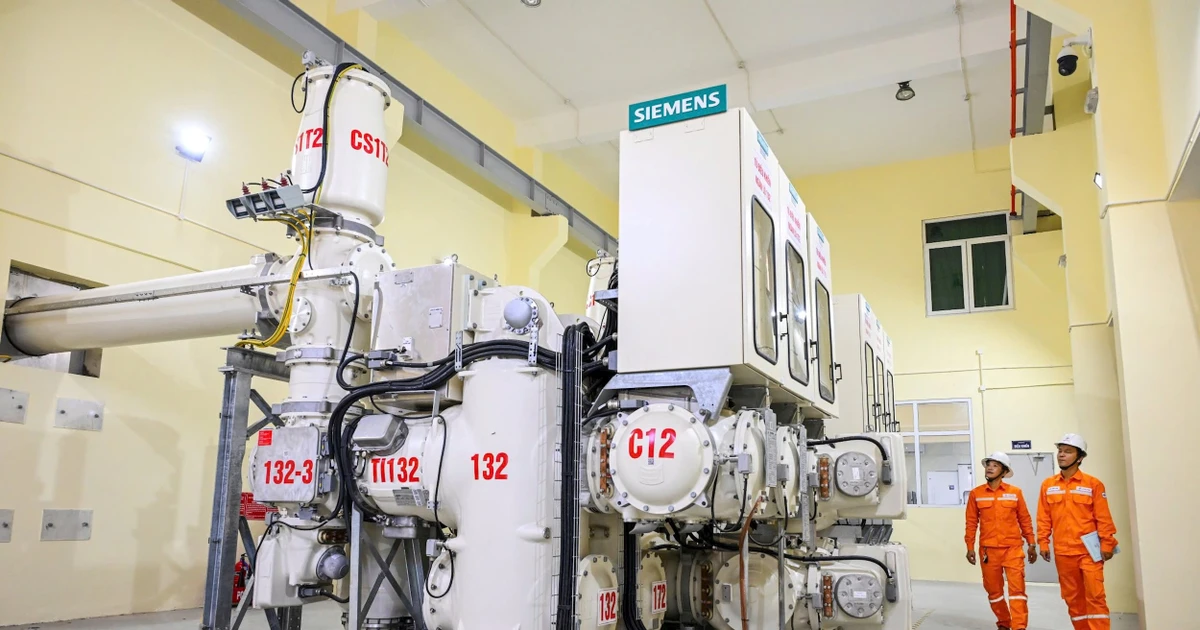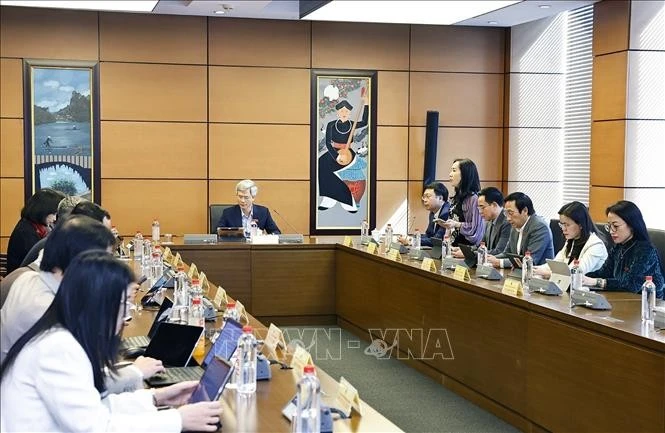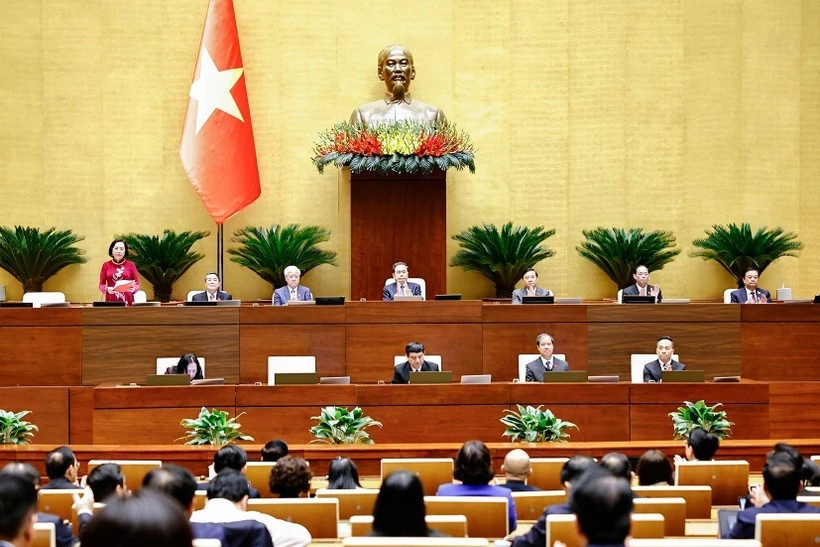The application of science, technology, and digital transformation is considered the key to shortening the gap between urban and rural areas, towards the goal of developing smart and sustainable new-style rural areas.
Rural areas transformed
Giao Ninh Commune, formerly formed from Giao Phong, Giao Thinh and Quat Lam Town, Ninh Binh Province, has completed building a model new-style rural areas with an average annual income exceeding 100 million VND per person.
Giao Ninh is also one of nine pilot communes for building smart new-style rural areas selected by the Ministry of Agriculture and Environment, receiving an investment of 11 billion VND — 5.5 billion of which came from central and provincial budgets and the remainder from the local budget. Using this funding, Giao Ninh chose to build a digital government as a breakthrough direction towards a smart new-style rural areas. After the merger of communes and the establishment of the two-tier local government system, the commune has established a Public Administrative Service Centre, smart classrooms, an intelligent camera system, and a remote healthcare consultation platform.
Pham Huu Ngoc, Deputy Director of the Giao Ninh Public Administrative Service Centre, said that after a period of operation, the two-tier system has met residents’ administrative needs. For elderly people unfamiliar with technology, trained officers provide guidance and assistance, leading to high public satisfaction.
Resident Mai Thi Ngoc shared: “Thanks to the careful guidance of commune officers and the interconnected digital data system, procedures for transferring my land-use certificate to my children were completed quickly. I am very satisfied with the attitude and efficiency of the commune staff.”
In addition to improving administrative services, the commune’s smart camera system, installed at road junctions and intersections and equipped with recording functions, has supported the police in maintaining public security and traffic order.
Alongside the Public Administrative Service Centre and surveillance system, the commune has also built three smart classrooms and a digital library with computers and automated attendance cameras to promote “digital learning” in schools. Deputy Principal Nguyen Van Canh of Giao Phong Lower Secondary School said that all teachers have been trained and are already applying smart classroom systems in the current academic year.
Vu Phuong Nhung, Vice Chairwoman of the Giao Ninh People’s Committee, noted that residents are now satisfied and confident in the operation of the two-tier local government system, enabling them to focus on production and economic development.
Le Hong Duc, Deputy Chief of the Ninh Binh Provincial New-style Rural Areas Coordination Office, stated that the province will soon review, assess and recognise newly reorganised communes meeting the criteria for standard, advanced and model new-style rural areas for the 2021–2025 period. The office will advise on building leadership and implementation frameworks for the 2026–2030 phase once guidance from the central level is issued. For now, the locality will focus on expanding the One Commune, One Product (OCOP) programme and developing the rural economy. The province currently has 980 OCOP products rated three stars or above.
The inevitable path of the future
According to the Central Steering Committee for National Target Programmes for the 2020–2025 period, rural healthcare, education, and cultural-sports infrastructure have received comprehensive investment, serving essential needs and improving quality of life. Models such as “community digital technology groups” and 100% internet coverage across communes have been established in many provinces, including Thanh Hoa, Ha Tinh, Dong Thap, and now Ninh Binh. These initiatives not only bridge the digital divide between urban and rural areas but also open opportunities for balanced digital and economic growth.
Smart new-style rural areas development and “smart farmers” have become an inevitable trend, strongly influencing agricultural trade and logistics infrastructure. Across the country, collection, processing, and preservation facilities for agricultural products have been established even at the hamlet and neighbourhood levels, linking production with markets, reducing post-harvest losses, and increasing product value. This shift is gradually transforming agriculture towards a multi-value, sustainable model.
To replicate successful models like that in Giao Ninh, economic experts suggest establishing a national set of new-style rural areas criteria adapted to local realities and empowering localities to define standards based on regional characteristics. The focus should shift from quantity to quality, with emphasis on maintaining and improving achieved standards and developing village-level new-style rural areas models based on community strength and indigenous knowledge. Localities are also encouraged to develop NTMs with specialised strengths suited to regional conditions.
According to Le Minh Hoan, Vice Chairman of the National Assembly, to achieve these goals soon, creativity based on local characteristics is essential in building new-style rural areas. The commune-level development space should not only be a production area but an integrated cultural, social and community space, in which the capacity and knowledge of rural residents are decisive factors.
Dr Dang Kim Son, economic expert and former Director of the Institute of Policy and Strategy (Ministry of Agriculture and Rural Development), stated that alongside economic development, mechanisms and policies are needed to attract rural workers back to contribute to rural economic development, ending the situation of “leaving farming and leaving the homeland.” Cultural, scientific, technological, and economic standards should be set by the people themselves. Rural areas will develop their own enterprises in services, OCOP, and tourism to attract urban residents back to rural living.
Ngo Truong Son, Chief of the Central New-style Rural Areas Coordination Office, emphasised that in the coming period, science and technology must be applied to agriculture and rural development, particularly in breeding technology, advanced cultivation techniques, and smart agricultural equipment. Vocational training should be diversified to equip agricultural workers acquire new skills and facilitate the transition to non-agricultural occupations, while also promoting rural economic growth, services, tourism, and rural e-commerce through digital technology.
With breakthroughs in institutions and policies, and the determination of localities, Viet Nam will form many more liveable rural communities — transforming the countryside into an ideal place to live, where tradition and modernity harmonise, and cultural identity and natural landscapes are preserved through the foundations of technology, digital transformation, and e-commerce.
According to the Central Steering Committee for National Target Programmes for the 2021–2025 period, by 2030, at least 80% of communes nationwide are expected to meet new-style rural area standards, with at least 35% achieving advanced new-style rural area status and 10% classified as modern new-style rural areas. Around 50% of advanced new-style rural areas are expected to meet 70% of the modern new-style rural area criteria.
